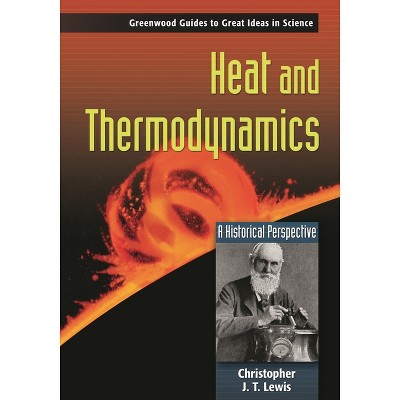Sponsored

Electricity and Magnetism - (Greenwood Guides to Great Ideas in Science) Annotated by Brian Baigrie (Hardcover)
In Stock
Sponsored
About this item
Highlights
- All students of physics need to understand the basic concepts of electricity and magnetism.
- About the Author: Brian Baigrie is Associate Professor in the Institute for History and Philosophy of Science at the University of Toronto.
- 184 Pages
- Science, History
- Series Name: Greenwood Guides to Great Ideas in Science
Description
About the Book
All students of physics need to understand the basic concepts of electricity and magnetism. E&M is central to the study of physics, and central to understanding the developments of the last two hundred years of not just science, but technology and society in general. But the core of electricity and magnetism can be difficult to understand - many of the ideas are counterintuitive and difficult to appreciate. This volume in the Greenwood Guides to Great Ideas in Science series traces the central concepts of electricity and magnetism from the ancient past to the present day, enabling students to develop a deeper understanding of how the science arose as it has.
The volume examines the work of many of the most important scientists of the past: Benjamin Franklin and his fluid theory of electricity, James Clerk Maxwell and the development of the theory of electromagnetism, Albert Einstein and his special theory of relativity, which arose from debates over Maxwell's theory. Electricity and Magnetism also examines the importance of the scientific research to modern technology - radio and television, computers, and light and power. Jargon and mathematics is kept to a minimum, and the volume includes a timeline and an annotated bibliography of useful print and online works for further research.
Book Synopsis
All students of physics need to understand the basic concepts of electricity and magnetism. E&M is central to the study of physics, and central to understanding the developments of the last two hundred years of not just science, but technology and society in general. But the core of electricity and magnetism can be difficult to understand - many of the ideas are counterintuitive and difficult to appreciate. This volume in the Greenwood Guides to Great Ideas in Science series traces the central concepts of electricity and magnetism from the ancient past to the present day, enabling students to develop a deeper understanding of how the science arose as it has.Review Quotes
"Baigrie presents a concise and systematic overview of ideas and discoveries that led to our present understanding of electricity and magnetism. Historical drawings and experimental schematics assist the reader throughout. He gives fair treatment of conflicting ideas, a critical undertaking for anyone attempting to understand the process of scientific discovery and the ideas that develop from these discoveries....For anyone wanting to learn how these two fundamental aspects of modern life were developed, Baigrie's book is a great place to start. Highly recommended. General readers; lower-division undergraduates; two-year technical program students." --Choice
"Editor's Choice Baigrie delivers a fascinating and detailed treatise on the history of magnetism and electricity....This book is perfect reading for advanced high school students and beyond, with no upper limit to who would learn and enjoy the new information found in its pages." --SB&F "Using his classroom lectures, Baigrie provides a text that is accessible to students and general readers, as well as specialists, and traces the development of the science of electricity and magnetism from the early modern period to the first decade of the twentieth century. He focuses on concept formation and novel device production, while technological applications are only mentioned in passing and included in postscripts on power and communication technologies. Individuals are emphasized over institutions. Taking a broad perspective, he also does not explore the details of mathematical technicalities. Chapters cover early investigations and the emergence of systematic theory to charged particles of matter and the atom and the new physics of the twentieth century." --SciTech Book NewsAbout the Author
Brian Baigrie is Associate Professor in the Institute for History and Philosophy of Science at the University of Toronto. He is the author of many articles in history and philosophy of science, and has edited Scientific Revolutions: Primary Texts in the History of Science, History of Modern Science and Mathematics, and Life Scientists of the Twentieth Century.Shipping details
Return details
Trending Non-Fiction

















